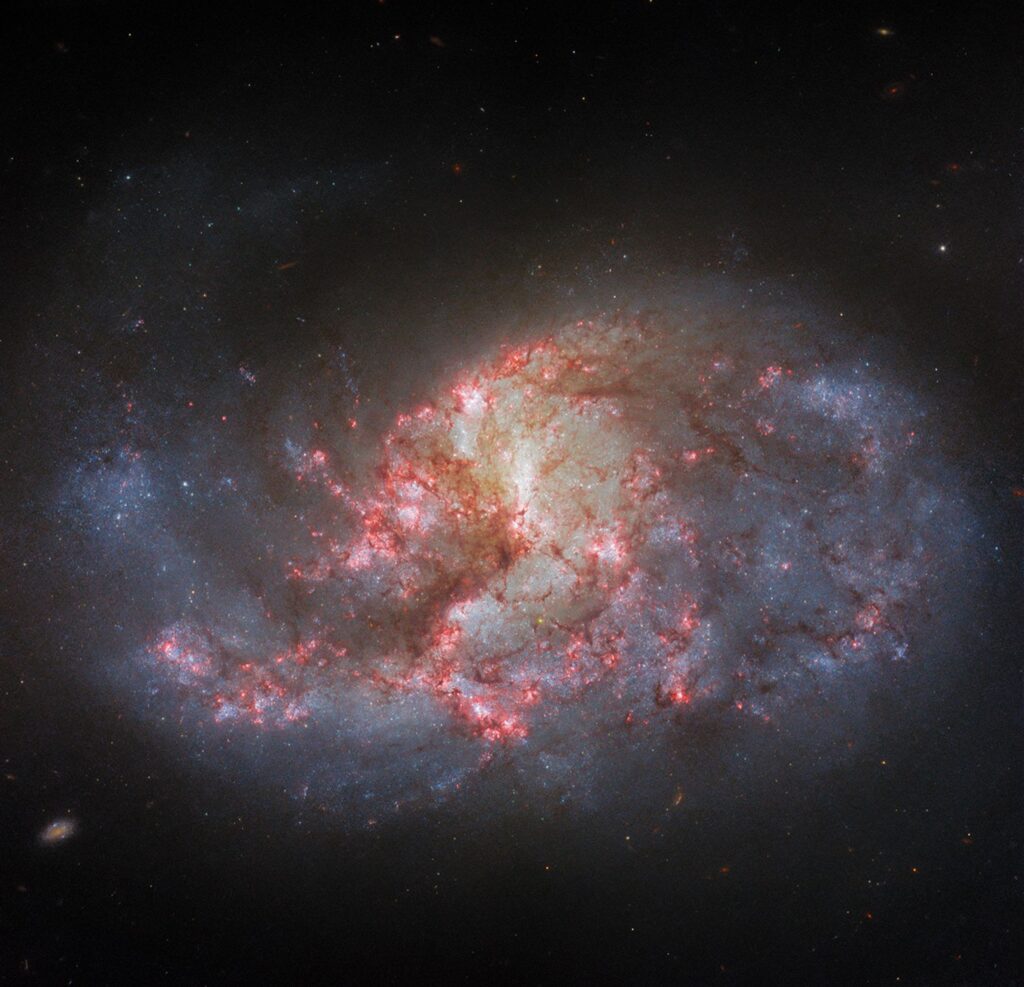For the first time, a powerful NASA telescope aboard the International Space Station observed merging “hot spots” on a weird star, known as a magnetar.
The telescope is called the Neutron star Interior Composition Explorer (NICER), and seeks to understand more about the extreme conditions present in super-dense, city-sized neutron stars and their variants. (Magnetars, for example, are a type of neutron star with a strong magnetic field.)
“NICER tracked how three bright, X-ray-emitting hot spots slowly wandered across the object’s surface while also decreasing in size, providing the best look yet at this phenomenon,” lead researcher George Younes, who has affiliations at George Washington University in Washington, D.C. and NASA’s Goddard Space Flight Center in Greenbelt, Maryland, said in an agency statement Tuesday (March 8).
Related: There’s a tiny, bright magnetar photobombing our galaxy’s supermassive black hole

“The largest spot eventually coalesced with a smaller one, which is something we haven’t seen before,” Younes added. The team suggests the spots formed and moved due to crustal motion, in a similar process on the small star that the Earth experiences through tectonic plate motions that generate seismic activity.
The magnetar in question is called SGR 1830-0645 (SGR 1830 for short) and lies roughly 13,000 light-years away from Earth. The outburst was first spotted by NASA’s cosmic burst-hunting Neil Gehrels Swift Observatory on Oct. 10, 2020. Swift found pulses coming from the object as it rotated every 10.4 seconds. NICER sprang into action the same day, detecting three closely-spaced peaks in the X-ray emission for each rotation of SGR 1830.
The peaks “were caused when three individual surface regions much hotter than their surroundings spun into and out of our view,” NASA said.

NICER continued watching SGR 1830 nearly daily between Oct. 10 to Nov. 17, until the sun creeped into the field of view and caused risks with observations. The telescope saw that emission peaks were starting to shift, causing them to happen at different moments in the magnetar’s rotation, suggesting crustal motion.
“The crust of a neutron star is immensely strong, but a magnetar’s intense magnetic field can strain it beyond its limits,” co-author Sam Lander, an astrophysicist at the University of East Anglia in United Kingdom, added in the same statement.
Related stories:
“Understanding this process is a major challenge for theorists, and now NICER and SGR 1830 have brought us a much more direct look at how the crust behaves under extreme stress,” Lander said.
The team suggests they saw a single region on the magnetar where the crust is now partly molten, and starting to deform due to extreme magnetic stress. Moreover, the three observed spots are likely locations for coronal loops, which we can see as plasma arcs on the sun connecting to the surface. “The interplay between the loops and crustal motion drives the drifting and merging behavior,” NASA said.
A study based on the research was published Jan. 13 in Astrophysical Journal Letters.
Follow Elizabeth Howell on Twitter @howellspace. Follow us on Twitter @Spacedotcom or Facebook.


